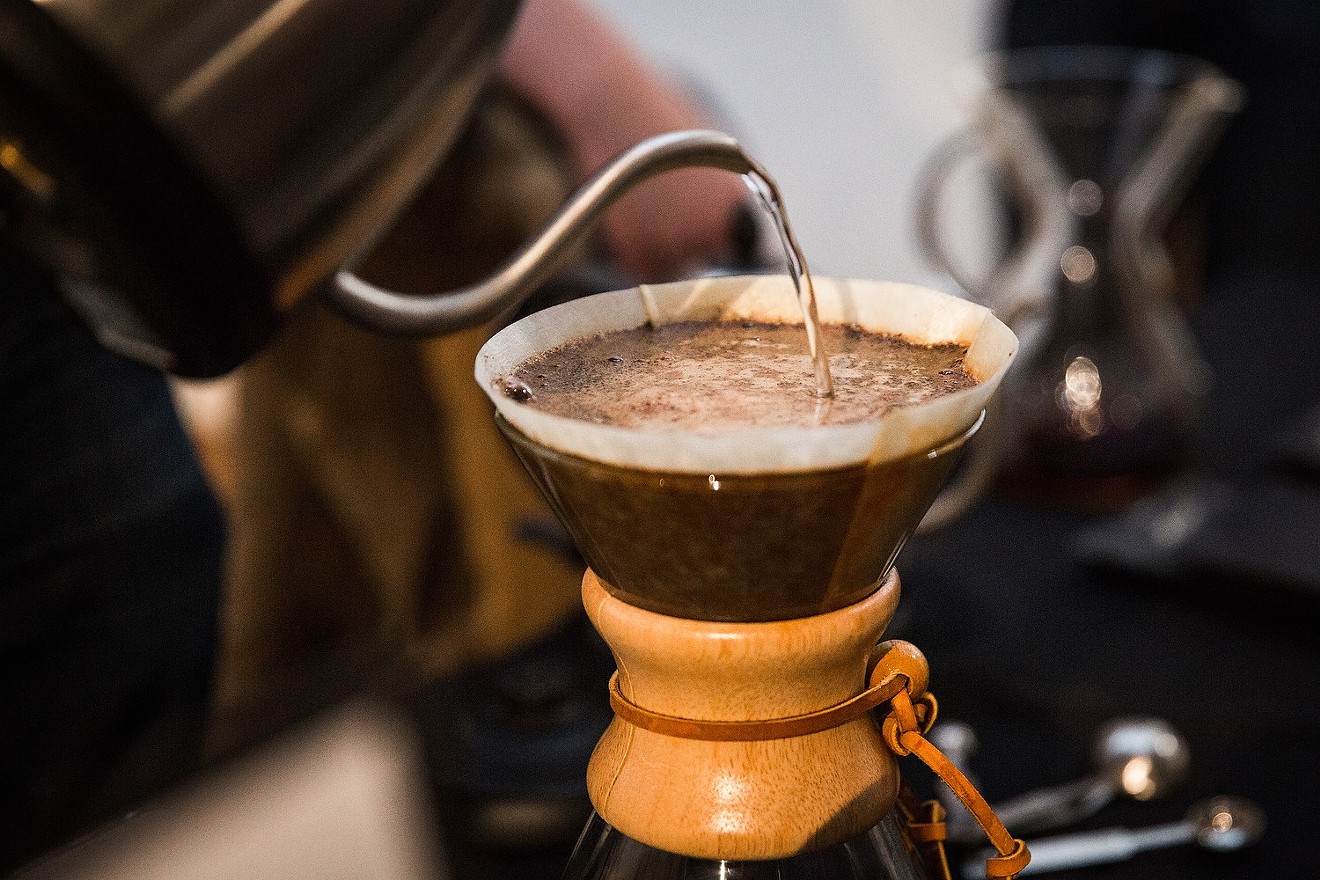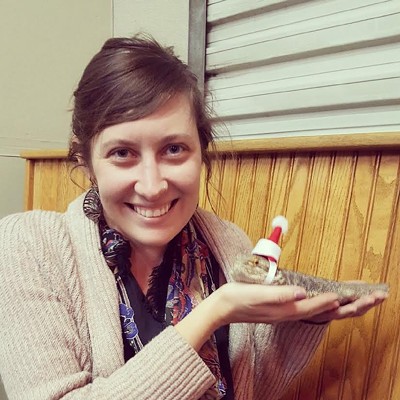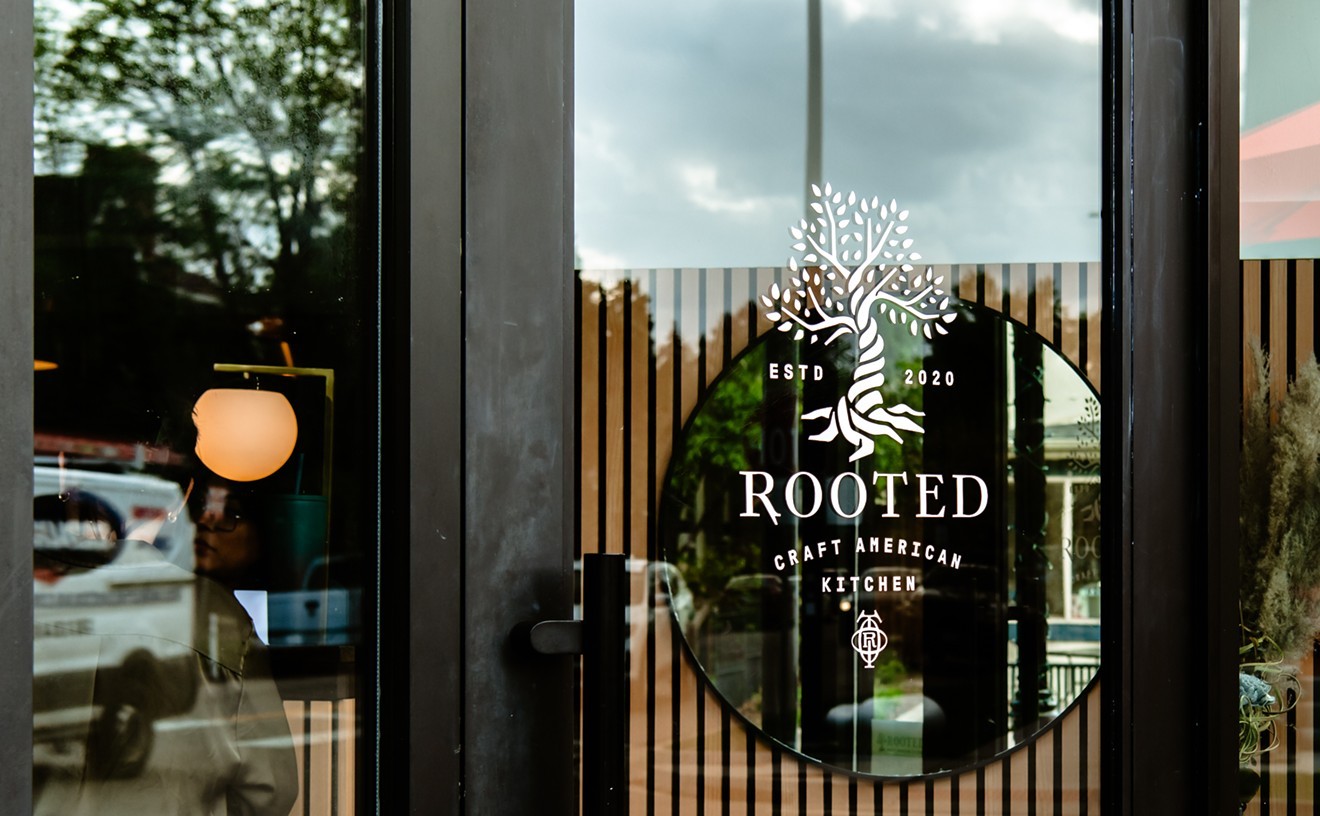If your office is now your kitchen and your meetings take place over Zoom, then you're staying home, and your fellow humans thank you. But that also probably means that you aren't visiting coffee shops as much as you used to, so you're missing the taste and treat of good coffee. Fortunately, local coffee expert Jake Stechmeyer, the mastermind behind Native Coffee Club and #SaveColoradoCoffee, can help you pick the perfect made-in-Colorado coffee for your preferred at-home brewing method.
Before you start: Most roasters sell their coffee beans whole instead of ground because they want you to grind it fresh to get the best flavor. A quality burr grinder is a worthwhile investment, as it smoothly and evenly crushes the beans rather than chops them up like a blade grinder. But any good grinder will make good coffee better, so use what you've got. No grinder? No problem: Some shops will pre-grind beans upon request.
Drip: Most coffee shops use the bulk brew method for their house coffee option. No shame if you add cream and sugar, but those only go so far to making a cup of coffee drinkable. Give yourself a leg up by starting with the perfect bean for drip coffee: Four Leftys from Novo Coffee. This blends coffees from the Americas for a "classic" flavor profile — nutty, full-bodied, medium acidity, with hints of dark chocolate. Stechmeyer says you should grind the beans right before brewing for the best taste.
Chemex: Shaped like a glass beaker in a science experiment, this contraption is not as intimidating to use as it first appears. Insert a filter in the top, as you do with most other brew methods, then add ground coffee and hot water. Stechmeyer recommends using Tesfay Bekele Ethiopia from Middle State Coffee because the Chemex brings out the coffee's candied fruit and simple floral flavors. Allow the coffee to bloom after pouring the first bit of water, then follow with a second, larger pour of water and a small stir to ensure that all of the coffee is saturated.
Pour Over: This method of brewing is most commonly used for single servings, which is great if you are the sole coffee drinker in your household or like a stronger (read: more caffeinated) cup. And, according to Stechmeyer, it's the ideal way to get all the flavor and nuances from the coffee beans for a peak cafe experience. We like Simón Bolívar from Spur Coffee because a pour over highlights the sweetness of apricot, honeysuckle and dulce de leche in the coffee. A simple yet effective trick when using this method: Pour the water slowly and at a consistent pace; using a gooseneck kettle can help. Preheat your cup for delicious coffee at the perfect temperature.
French Press: This is a classic method for brewing a stronger coffee similar to results from a pour over, but in a larger amount like a Chemex — so it's the best of both worlds. For a French press, we recommend Belafonte Double Origin from Queen City Collective Coffee. It's the company's flagship coffee because it's a solid, everyday coffee that tastes like a mix of chocolate and berries. When brewing with a French press, make sure to use a coarse grind. Once you've added the coffee and hot water (which should be just below boiling), wait four minutes, then push the filter down at a slow but constant speed; too fast, and the grounds will slip through the mesh filter.
Espresso Machine: Some lucky readers may have an at-home espresso machine. While most aren't as fancy as the pricey devices found in coffee shops, an automatic espresso maker typically has a built-in milk frother, which is essential to re-creating a cafe-style latte or cappuccino. Although any roast would work for this method (not just an espresso blend), Stechmeyer recommends Four Sisters from Copper Door Coffee. With hints of smooth chocolate ganache, caramel and slightly tart Key lime, the flavor profile makes for a classic espresso taste. Tips for a perfect shot: Preheat the machine by pulling one shot without coffee. Also, make sure to finely grind the coffee and firmly tamp it; the shot should take twenty to thirty seconds to pull.
Cold Brew: No, it's not just cold coffee. That's one way to do it, but most good cold brew takes time — typically twelve hours or more of cold steeping. Instead, purchase a cold-brew concentrate from your favorite cafe; ours comes from Sapor Coffee & Concepts. The cafe recently started selling cold brew by the half-gallon as part of its #stayathome coffee line. The typical mixture is half cold-brew concentrate and half water over ice, but we recommend starting with less water and diluting to your taste.
For more tips and tricks or to subscribe for a curated Colorado coffee delivered straight to your doorstep every month, follow Native Coffee Club on Instagram or sign up on the website.
[
{
"name": "Air - MediumRectangle - Inline Content - Mobile Display Size",
"component": "12017618",
"insertPoint": "2",
"requiredCountToDisplay": "2"
},{
"name": "Editor Picks",
"component": "17242653",
"insertPoint": "4",
"requiredCountToDisplay": "1"
},{
"name": "Inline Links",
"component": "18838239",
"insertPoint": "8th",
"startingPoint": 8,
"requiredCountToDisplay": "7",
"maxInsertions": 25
},{
"name": "Air - MediumRectangle - Combo - Inline Content",
"component": "17261320",
"insertPoint": "8th",
"startingPoint": 8,
"requiredCountToDisplay": "7",
"maxInsertions": 25
},{
"name": "Inline Links",
"component": "18838239",
"insertPoint": "8th",
"startingPoint": 12,
"requiredCountToDisplay": "11",
"maxInsertions": 25
},{
"name": "Air - Leaderboard Tower - Combo - Inline Content",
"component": "17261321",
"insertPoint": "8th",
"startingPoint": 12,
"requiredCountToDisplay": "11",
"maxInsertions": 25
}
]














